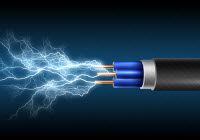Category: Special Topics in Safety Management
Safety is a process, and as such, needs to be managed. This section offers resources to create a viable safety program, sell it to senior management, train supervisors and employees in using it, and then track and report your progress. Look also for ways to advance your own skills in these areas, both for your current job, and those that follow.
Free Special Report: 50 Tips for More Effective Safety Training
Accident prevention often begins with accident investigation. You can’t prevent accidents if you don’t know what caused them. Nobody wants a workplace accident. Not you. Not your insurer. Not supervisors. Not employees. Not the families of injured workers. But when an accident does happen, it’s important to handle the investigation promptly and effectively. To do […]
Yesterday, we presented the first part of OSHA’s computer workstation safety checklist. Today, we conclude with the rest of the checklist and some important information about BLR’s Safety Audit Checklists. WORK AREA—Is the work area designed or arranged for doing computer tasks so that the user’s: Thighs have sufficient clearance space between the top of […]
Check out this workstation safety checklist to help prevent MSDs among employees who spend long hours at the computer. Musculoskeletal disorders (MSDs) like carpal tunnel are a problem for employees who work all day on a computer. Risk factors include primarlly: Repetition—the daily and lengthy use of a keyboard and mouse or trackpad Awkward postures—extending […]
Manage electrical hazards successfully with these 10 tips for keeping workers safe from shocks, burns, and electrocution. Jim White, training director for Shermco Industries, Inc., a Dallas-based electrical power systems test and maintenance company, has developed a list of 10 electrical safety tips for keeping workers safe. 1. Develop a zero-tolerance policy toward energized work. […]
When it comes to electrical safe work practices, its 1910.333 you want to examine closely. Here’s a mini tour of the requirements.< OSHA requires your employees to use safety work practices to prevent electric shock or other injuries resulting from either direct or indirect electrical contacts when work is performed near or on equipment or […]
Workers need PPE to protect against all kinds of hazards. Of course, your employees probably don’t need protection against pigeon poop. But since you never know… A visitor to Safety.BLR.com recently posed an intriguing question in our “Ask the Expert” feature. It went like this: City employees need to access a confined space in a […]
Confused about exactly which items of PPE you have to pay for and which you don’t? Here’s quick review of the “employer pays” rule. OSHA’s PPE standard (29 CFR 1910.132[h]) says that employers must pay for most types of PPE when used by employees exclusively in the workplace (that is, not for personal use at […]
Yesterday,we identified the six stages in the job hazard analysis process. Today, we feature a sample analysis developed by OSHA. Here’s an example of a job hazard analysis developed by OSHA for a job that involves grinding iron castings. There are three basic steps involved in this job: Step 1— Reach into metal box to […]
One of the best ways to determine safe work procedures to protect workers in a particular job is to conduct a job hazard analysis.< Job hazard analysis is a simple but powerful technique that focuses on job tasks as a way to identify hazards before they occur. It focuses on the relationship between the worker, […]
Any powered equipment is potentially dangerous—even if it’s supposed to be shut down. Many needless accidents occur when somebody turns on a machine that’s supposed to be locked out. Lockout/tagout accidents are not only needless, but serious. They result not in small cuts or scratches, but often cause amputations, serious fractures, or death. Any energy […]

